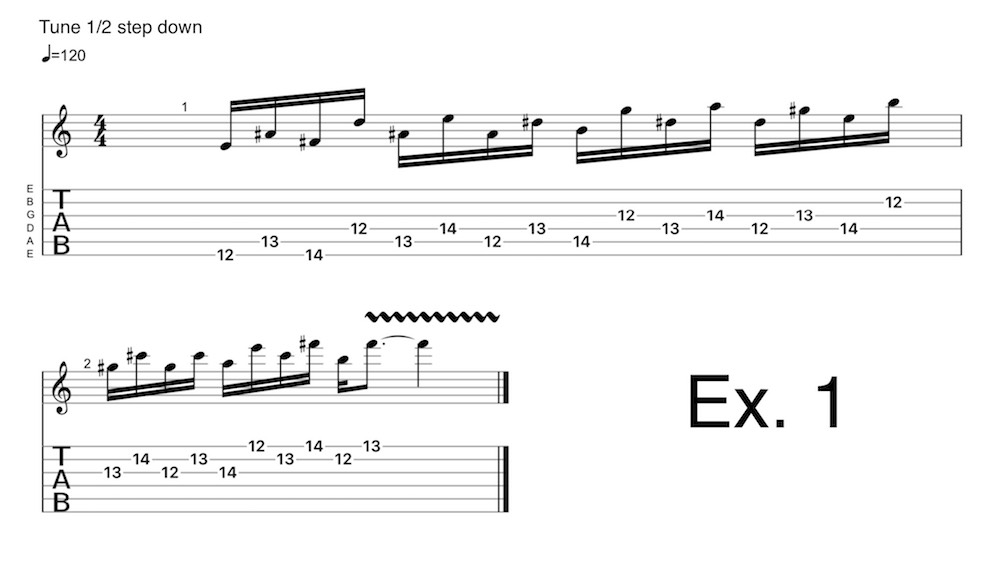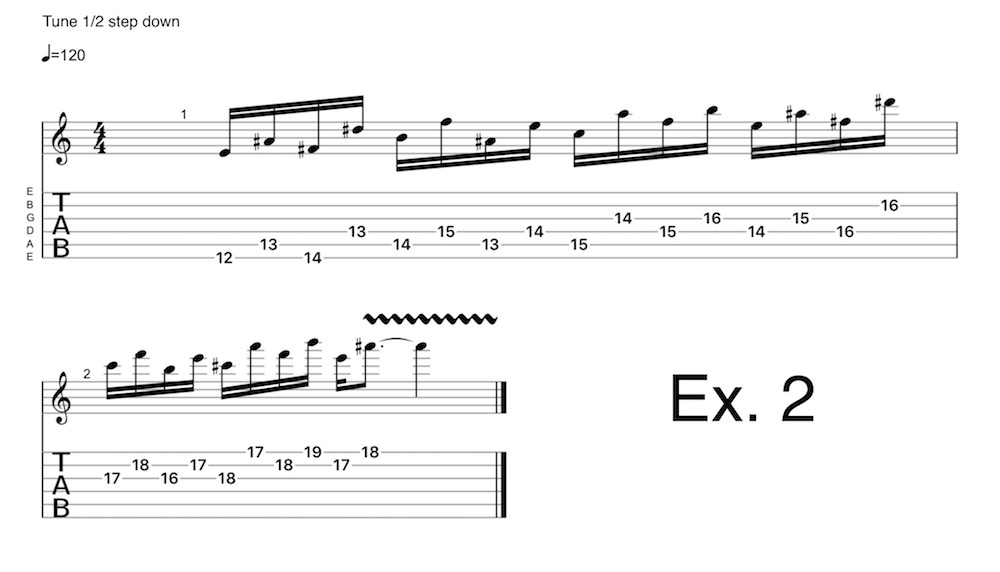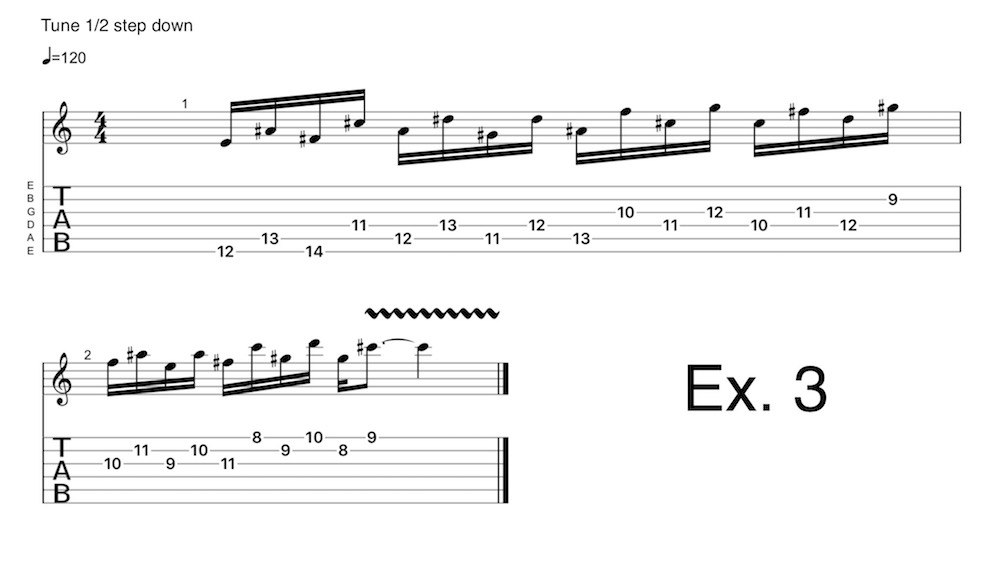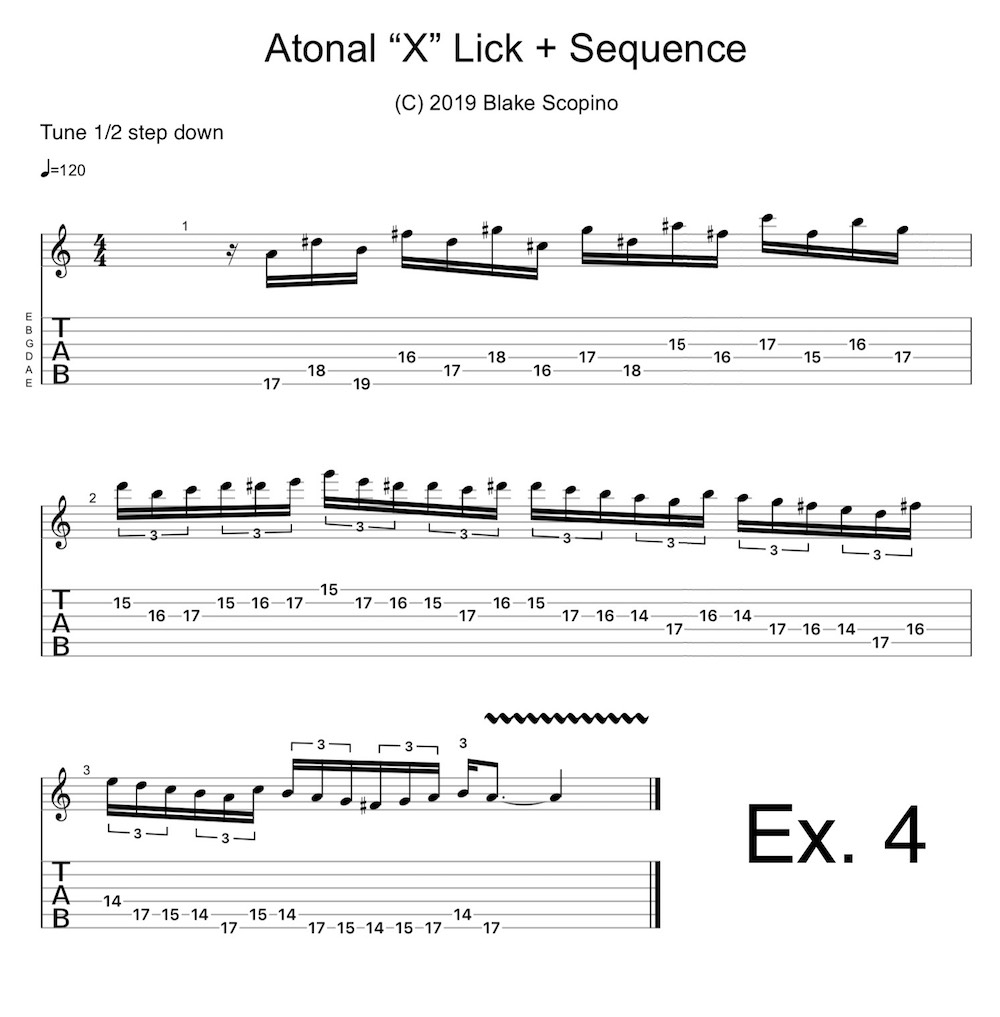Add tension to your solos with the atonal 'X' scale
This flexible scale sounds great in a modal jam or fusion context

There are many ways to create tension in a solo by playing outside the original scale. The 'X' scale is not really a scale, but rather a shape with notes that are played in a certain sequence. Other than making a cool discordant or atonal sound, the X can be moved in any direction on the fretboard. This is useful when trying to bridge from one melodic idea to another.
Also, since there is no tonic in these patterns, you can start the X wherever you want on the neck in your solos. The faster it's played, the less its harmonic relationship to the key you’re in matters. The frantic sound, comprised of mainly tritones and major 3rds, sounds great in a modal jam or fusion context.
Ex. 1 shows the most basic form of this shape, played in a single position across all six strings.

Ex. 2 shows the X played diagonally up the neck.

Ex. 3 shows the X played diagonally down the neck.

Finally, Ex. 4 shows a few bars of the X played over a djent groove in A before weaving into the original scale (A Blues scale with added notes from the Dorian mode) in a sixteenth-note triplet sequence.

Watch the video below to see the X in action (it’s in bar 7).
Blake Scopino plays guitar in the band Lola Montez. To see if he can back up his big mouth, listen to his band here.
Get The Pick Newsletter
All the latest guitar news, interviews, lessons, reviews, deals and more, direct to your inbox!









